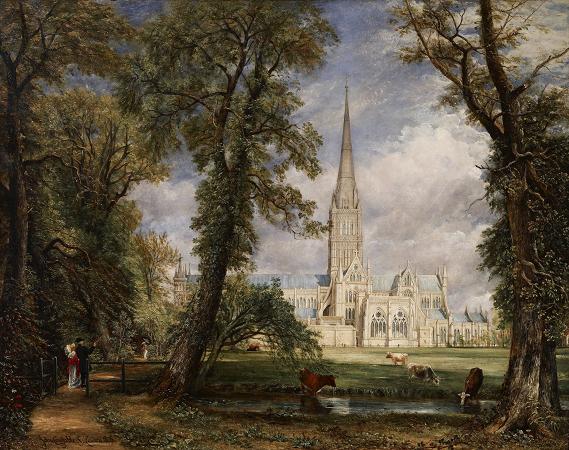Landscape with Glacier. A glacier is a persistent body of dense ice that is constantly moving under its own weight. A glacier forms where the accumulation of snow exceeds its ablation over many years, often centuries. Glaciers slowly deform and flow due to stresses induced by their weight, creating crevasses, seracs, and other distinguishing features. They also abrade rock and debris from their substrate to create landforms such as cirques and moraines. Glaciers form only on land and are distinct from the much thinner sea ice and lake ice that form on the surface of bodies of water. On Earth, 99% of glacial ice is contained within vast ice sheets in the polar regions, but glaciers may be found in mountain ranges on every continent including Oceania's high-latitude oceanic island countries such as New Zealand. Between 35°N and 35°S, glaciers occur only in the Himalayas, Andes, Rocky Mountains, a few high mountains in East Africa, Mexico, New Guinea and on Zard Kuh in Iran. Glaciers cover about 10 percent of Earth's land surface. Continental glaciers cover nearly 13 million km 2 or about 98 percent of Antarctica's 13.2 million km 2, with an average thickness of 2,100 m. Greenland and Patagonia also have huge expanses of continental glaciers. The volume of glaciers, not including the ice sheets of Antarctica and Greenland, has been estimated as 170,000 km 3. Glacial ice is the largest reservoir of fresh water on Earth. Many glaciers from temperate, alpine and seasonal polar climates store water as ice during the colder seasons and release it later in the form of meltwater as warmer summer temperatures cause the glacier to melt, creating a water source that is especially important for plants, animals and human uses when other sources may be scant. Within high-altitude and Antarctic environments, the seasonal temperature difference is often not sufficient to release meltwater. Since glacial mass is affected by long-term climatic changes, e.g., precipitation, mean temperature, and cloud cover, glacial mass changes are considered among the most sensitive indicators of climate change and are a major source of variations in sea level. A large piece of compressed ice, or a glacier, appears blue, as large quantities of water appear blue. This is because water molecules absorb other colors more efficiently than blue. The other reason for the blue color of glaciers is the lack of air bubbles. Air bubbles, which give a white color to ice, are squeezed out by pressure increasing the density of the created ice. The processes and features caused by or related to glaciers are referred to as glacial. The process of glacier establishment, growth and flow is called glaciation. The corresponding area of study is called glaciology. Glaciers are important components of the global cryosphere. Further information: Glacier morphology Glaciers are categorized by their morphology, thermal characteristics, and behavior. Alpine glaciers form on the crests and slopes of mountains. A glacier that fills a valley is called a valley glacier, or alternatively an alpine glacier or mountain glacier. A large body of glacial ice astride a mountain, mountain range, or volcano is termed an ice cap or ice field. Ice caps have an area less than 50,000 km 2 by definition. Glacial bodies larger than 50,000 km 2 are called ice sheets or continental glaciers. Several kilometers deep, they obscure the underlying topography. Only nunataks protrude from their surfaces. The only extant ice sheets are the two that cover most of Antarctica and Greenland. They contain vast quantities of fresh water, enough that if both melted, global sea levels would rise by over 70 m. Portions of an ice sheet or cap that extend into water are called ice shelves; they tend to be thin with limited slopes and reduced velocities. Narrow, fast-moving sections of an ice sheet are called ice streams. In Antarctica, many ice streams drain into large ice shelves. Some drain directly into the sea, often with an ice tongue, like Mertz Glacier. Tidewater glaciers are glaciers that terminate in the sea, including most glaciers flowing from Greenland, Antarctica, Baffin and Ellesmere Islands in Canada, Southeast Alaska, and the Northern and Southern Patagonian Ice Fields. As the ice reaches the sea, pieces break off, or calve, forming icebergs.
more...



